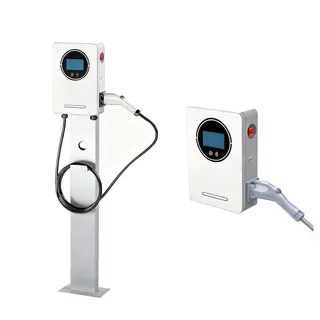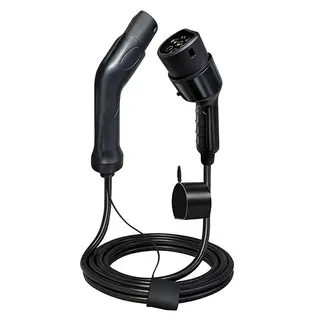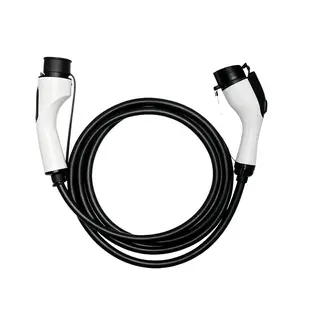In the era of rapid development of new energy vehicles, EV charging stations, as energy supply hubs for electric vehicles, have their operational efficiency and cost control of critical importance. However, many EV charging station operators and investors have encountered a perplexing issue in actual operation: there is a significant difference between the electricity recorded by the grid meter and the electricity measured and settled for charging vehicles, sometimes exceeding 10%, and this proportion varies month to month. This not only affects the economic benefits of the EV charging station but also puts operators in a dilemma on how to specifically reduce losses. This article will conduct an in-depth analysis of power losses at each stage of EV charging station operation and propose effective overall loss reduction strategies to help EV charging stations achieve cost reduction and efficiency improvement.
The main power loss in EV charging stations occurs during the conversion from AC power from the grid to DC power for vehicle batteries. This process involves multiple devices and stages, including transformers, high- and low-voltage cables, high- and low-voltage switches, charging piles, and SVGs (Static Var Generators). These devices all generate power losses during operation, and the amount of loss varies depending on the device type and operating status.
In actual operation, the metering point for electricity settlement with the grid is located in the high-voltage switchgear room, while the metering point for customer billing and service fee settlement is on the DC side of the charging gun. This leads to difficulties in accurately controlling and calculating the electricity loss between the two metering points. Since energy loss in transmission and conversion is inevitable, there exists a discrepancy between the grid meter readings and the electricity settled with charging vehicles. The uncertainty of this difference brings multiple operational problems, such as inaccurate cost accounting and compressed profit margins.
Only by identifying the specific stages and causes of losses in the EV charging station can effective loss reduction measures be formulated. The following is a detailed analysis of the power losses in key equipment and stages of the EV charging station, providing a solid foundation for subsequent loss reduction strategies.
Transformer loss is one of the main sources of power loss in EV charging stations, mainly divided into no-load loss (iron loss) and load loss (copper loss). No-load loss refers to the loss when the transformer operates without load, which is closely related to the core material and manufacturing process and is independent of load. Generally, amorphous alloy transformers have lower no-load losses than silicon steel transformers; oil-immersed transformers have lower no-load losses than dry-type transformers; the higher the core efficiency level, the lower the no-load loss. For example, first-level efficiency SCB13 and S13 transformers have lower no-load loss than third-level efficiency SCB11 and S13 transformers.
Load loss depends on the winding material and load size. Copper windings have lower losses than aluminum, and higher load increases load loss. Transformers of different power ratings also have different no-load and load losses. The larger the transformer, the higher the no-load loss and the higher the load loss at rated power. However, under fixed load, when using transformers of different ratings, the larger the transformer, the higher the no-load loss and the lower the load loss.
SVGs are configured to meet grid power factor assessment requirements. Their losses are proportional to configured capacity, including fixed loss and variable loss. Fixed loss is determined once the configuration is fixed, while variable loss is related to harmonic content and reactive power demand during operation.
Cable loss is mainly affected by resistivity, current, cable length, and cross-sectional area. Resistivity is related not only to material type but also to external factors such as temperature, pressure, and magnetic field. Generally, metal resistivity increases with temperature. Cable loss is inversely proportional to cross-sectional area and proportional to the square of current and cable length. Therefore, increasing cable cross-sectional area, reducing length, and reducing current can reduce line loss.
In EV charging stations, medium-voltage distribution is typically used, with transformer high-voltage side at 10 kV and low-voltage side at 380 V. Since high-voltage current is only 1/26 of low-voltage current, line loss of high-voltage cables of the same length is much lower than that of low-voltage cables.
Charging pile losses include standby loss and operational loss. Standby loss of AC piles is generally less than 10 W, and operational loss is negligible. DC piles have standby loss generally below 10 W, resulting in about 0.24 kWh standby loss per day. During operation, DC piles convert AC to DC, resulting in active power loss. Although manufacturers claim efficiency above 95%, the actual efficiency of DC fast chargers is closely related to charging power and environmental temperature. Efficiency is not optimal at both full and low power, and it drops significantly at low output.
Next, we focus on loss reduction strategies for EV charging stations from multiple aspects including equipment selection, layout optimization, and daily maintenance management, proposing practical solutions to help operators and investors achieve cost reduction and efficiency improvement.
When selecting transformers, both no-load and load losses should be considered. For transformers of 630 kVA or below, both oil-immersed and dry-type transformers are applicable, while transformers of 800 kVA and above are mainly dry-type. Oil-immersed transformers are cheaper than dry-type and have lower no-load loss but higher load loss. From the perspective of annual comprehensive loss, oil-immersed transformers have lower total loss. Additionally, a single large-power transformer has lower total loss compared to multiple smaller ones. For example, two 800 kVA transformers have higher total loss than one 1600 kVA transformer.
Amorphous alloy transformers, though more expensive, have lower no-load loss. Taking an 800 kVA dry-type transformer in the Pearl River Delta as an example, the amorphous alloy transformer reduces no-load loss by 0.735 kW, saves 6,438.6 kWh annually, and saves approximately 5,000 CNY in electricity costs per year. Therefore, considering investment return and operational risk, if the increased cost of the amorphous alloy transformer does not exceed annual electricity savings multiplied by operational years and by 0.4, it is recommended to prioritize amorphous alloy transformers.
The principle for reducing cable loss is "high voltage for long-distance transmission, low voltage for short-distance distribution." Within EV charging stations, the positions of high-voltage switchgear and charging piles are usually fixed. Therefore, adjusting transformer placement can reduce line loss. Placing transformers near DC charging piles, although it increases high-voltage cable length, significantly reduces low-voltage cable length, effectively lowering both cable investment and operational line loss.
When selecting cable cross-section, the principle of economic design should be followed. Since current through high-voltage cables is much smaller than through low-voltage cables, the cross-section of high-voltage cables can be selected economically. For low-voltage cables, due to higher investment and losses, adding low-voltage distribution cabinets within the station can be considered. Main low-voltage cables from transformer to distribution cabinet are selected economically, while branch cables from distribution cabinet to charging piles are selected based on safety, thereby reducing both investment and losses.
Charging pile models should match the type of vehicle with the highest charging energy in the EV charging station to ensure operation in the optimal efficiency range and reduce loss. If the pile is too large, it may operate at low power for extended periods; if too small, it may operate at rated power for long periods, both reducing efficiency and increasing operational loss.
In addition, AC side voltage of charging piles can be improved to 690 V or 800 V. This allows transformers to use common 10 kV/690 V models, reducing AC side current by approximately 50% for the same charging power, lowering low-voltage line loss, reducing cable cross-section, and lowering investment.
Beyond equipment selection and layout optimization, daily operation and maintenance are critical to reducing power loss.
Equipment Maintenance: Regularly inspect chargers, transformers, and cables to ensure proper operation. Pay attention to cable connections for looseness or corrosion and replace damaged components promptly to reduce loss caused by poor contact.
Environmental Control: Ensure proper cooling of charging equipment to prevent efficiency reduction due to overheating or overcooling. Adjust operation time during extreme temperatures to reduce operation under unfavorable conditions.
Charging Management: Optimize the charging process to avoid prolonged low-efficiency charging phases, such as reducing unnecessary trickle charging time. Properly schedule vehicle charging to maintain chargers within the high-efficiency range.
User Education: Educate EV owners about normal power loss and influencing factors, reducing misunderstandings and helping users cooperate with station operations.
Power loss is unavoidable in charging but should be within a reasonable range. DC fast charger losses are typically 5–10%, while AC charger losses are slightly lower, generally 3–8%. This means that if 10 kWh enters a charger, the battery receives about 9–9.7 kWh.
Power loss is influenced by equipment conversion efficiency, cable and connection quality, environmental conditions, and battery status. High-efficiency modules can reach 97% conversion, meaning 97 kWh of every 100 kWh input reaches the battery. High-quality cables and connectors with lower resistance reduce thermal loss. Environmental factors such as temperature and humidity affect efficiency; extreme temperatures may reduce charger efficiency and increase battery impedance, causing additional energy loss. Battery conditions, internal resistance, and charging curves also affect final energy conversion, particularly during trickle charging when efficiency is lower and loss proportion is higher.
Power loss is a key factor affecting EV charging station profitability. By analyzing losses at each stage and implementing targeted reduction strategies, power loss can be effectively reduced, improving economic benefits. Operators should consider equipment selection, layout optimization, and daily maintenance to achieve cost reduction and efficiency improvement. Educating users on power loss and its factors also contributes to long-term stable operation. Only in this way can EV charging stations better serve EV owners and achieve sustainable development amid rapid growth of new energy vehicles.



